
Water Safety Interview with Raynald Hawkins. The practice of snowmobiling is a popular activity, because it allows us to escape to environments rich in the beauty of its winter landscape. However, the use of a snowmobile requires a certain amount of responsibility on the part of its user with regard to the surfaces and places where they wish to travel.
We are certainly attracted by the flat surfaces offered by frozen bodies of water, whether lakes or rivers. These surfaces allow us on occasion to take shortcuts to connect two shores, but we must remember that this passage is not without risk.
The Passion Motoneige magazine team had the privilege of interviewing Raynald Hawkins, Executive Director of the Quebec Lifesaving Society. This non-profit organization’s mission is to promote safe interactions with water in order to prevent drowning and other injuries.
Passion Motoneige:
We tend to believe that icy surfaces on water bodies are uniform, but what is it really like?
Raynald Hawkins:
Yes, we do take the thickness of the ice for granted most of the time. For example, if we take the residents who are plowing a portion of the ice surface to check the thickness of the ice around the edges, they unfortunately believe that it is uniform over most of the area. There are several variables to consider. The current (more specifically on a river) and the position upstream or downstream affect the density of the ice. Another very important point that is not usually taken into consideration is the snow cover on a body of water which acts as an insulator and considerably modifies the thickness of the ice. It should also not be assumed that the ice thickness is adequate at one time and that it is automatically adequate the following week. It is necessary to constantly check again to make sure that the thickness is safe to drive on.
Passion Motoneige:
The Lifesaving Society reminds us of the 1-10-1 principle when we go into cold water, can you explain this rule?

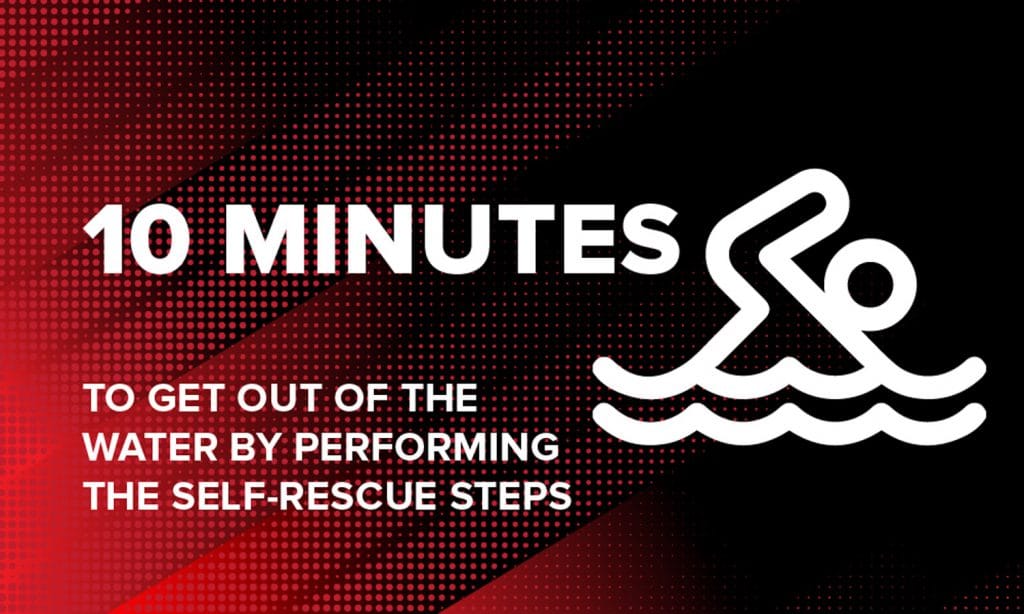
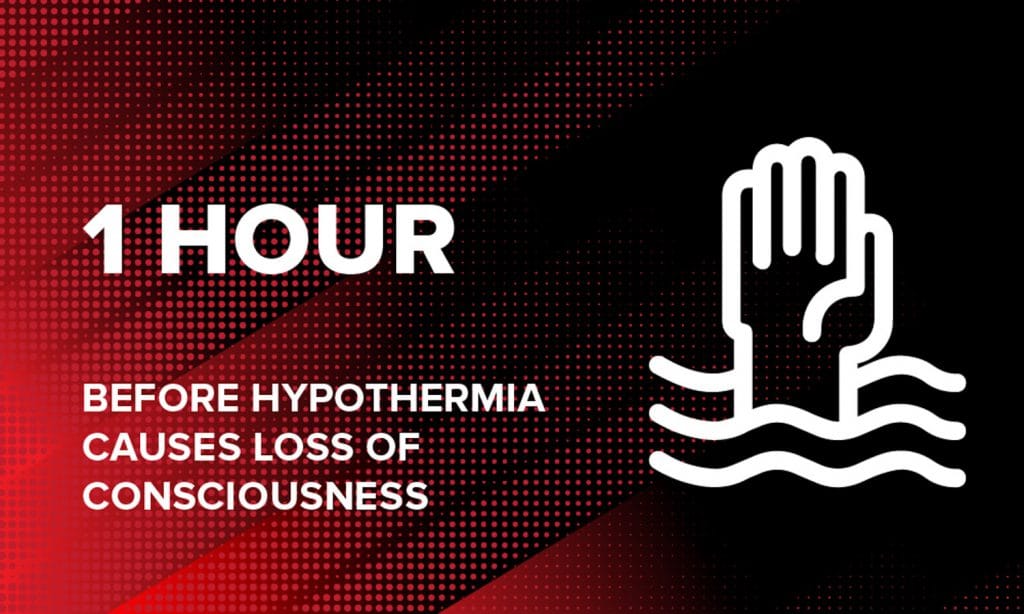
Raynald Hawkins:
It’s simple to remember and it’s a rule of thumb established by the University of Manitoba in Winnipeg who have done research on hypothermia.
1 minute to calm down, catch your breath and take control of your breathing. Since we find ourselves in the water involuntarily, we need to regain control of our breathing, as we may lose consciousness due to hyperventilation.
10 minutes of fine motor skills and muscular strength to be able to break the thin ice that might be around us. It is in this interval that we must extricate ourselves from our predicament.
1 hour before losing consciousness following hypothermia, depending on our physical condition, our fatty tissue, our muscle mass and our buoyancy.
So in summary, we have to keep our cool (no pun intended) to break the small ice around us to manage to cling to an ice that will be solid enough by supporting our forearms. Then, we have to make our legs go like when we took our swimming lessons to get out by rolling on the surface of the ice to distribute our weight.
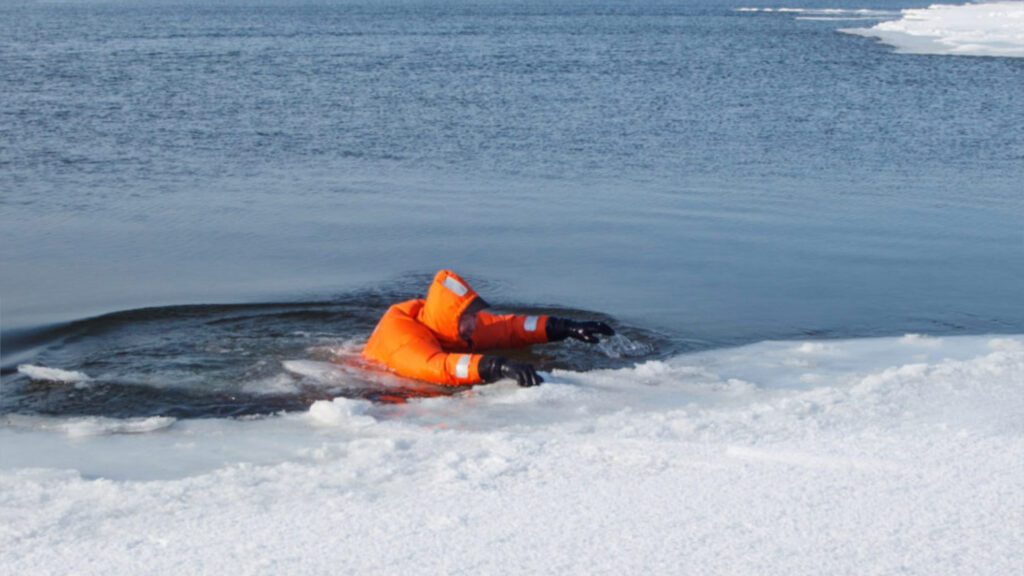
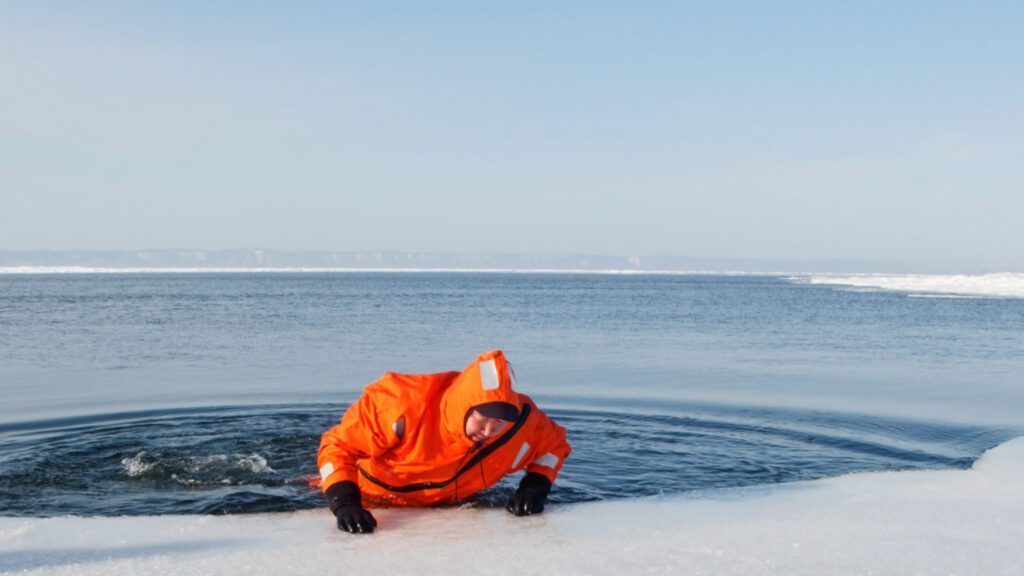
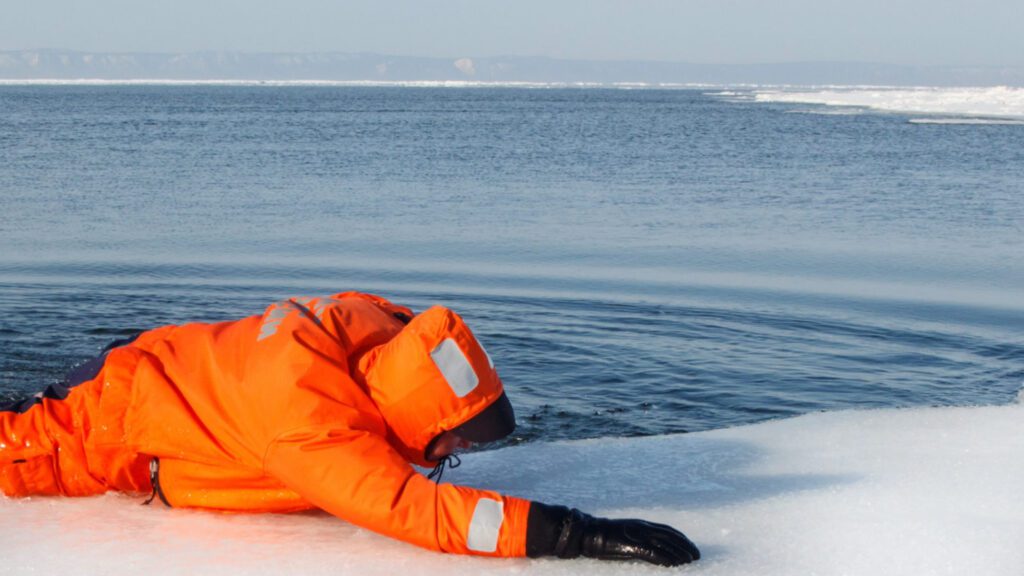
Passion Motoneige:
We know that hypothermia can cause death. If we witness a friend or colleague in the water, what should we do?
Raynald Hawkins:

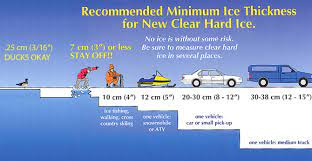
Hypothermia can lead to serious health risks and even death. If one of your companions is in a precarious situation, you must contact emergency services immediately by calling 9-1-1 without delay. While waiting for help, you can take the following steps:
You can use whatever is at hand to help your pet out of the water. A stick, a coat, a rope, etc. can be examples of extensions. Of course, you must distribute your weight over the weakened ice. A human chain can also be considered if the situation allows it.
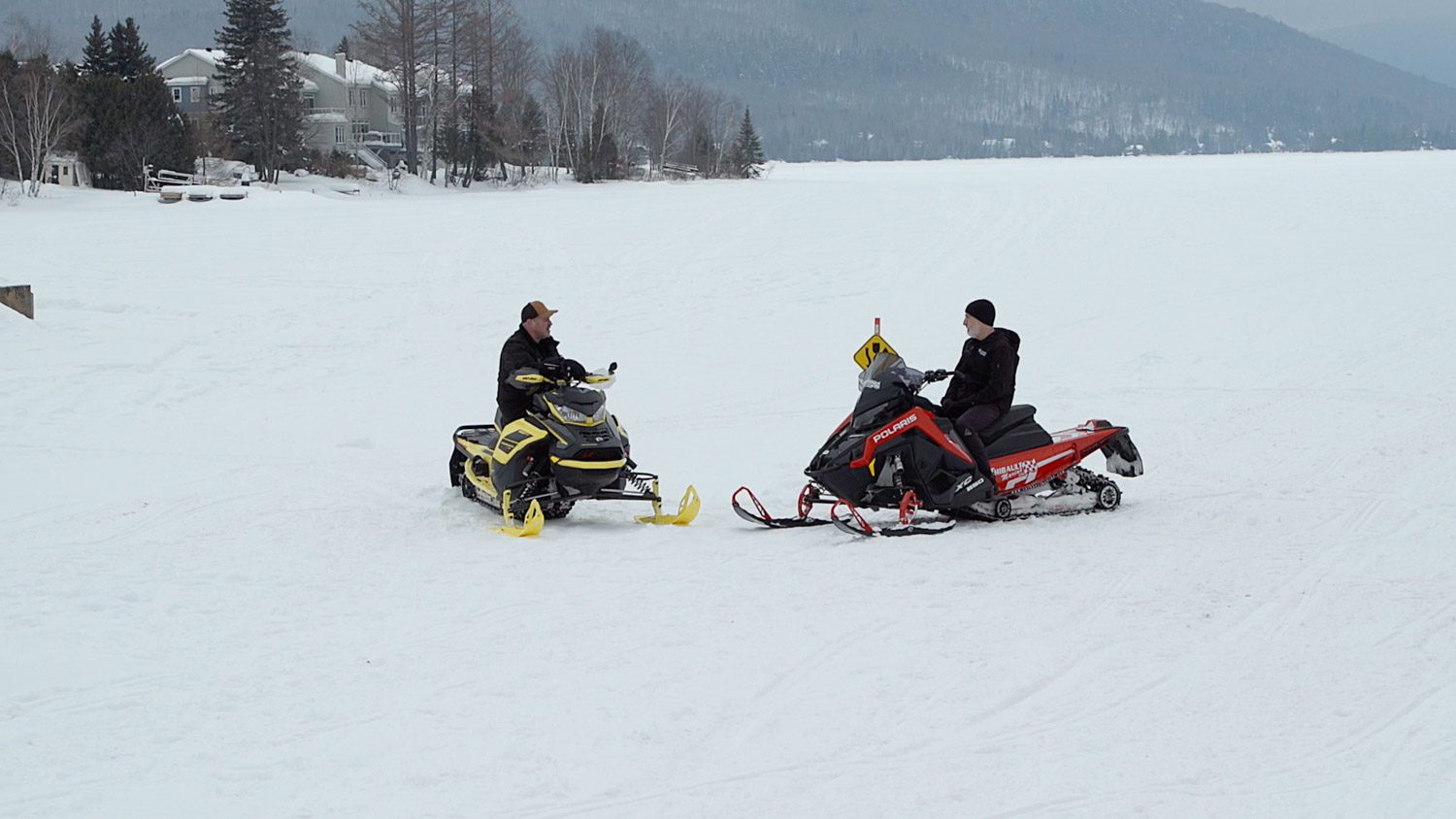
Subsequently:
-Get out of the cold without making any sudden movements.
-Carefully remove clothing that is damp or wet.
-Cover him with blankets and warm him gradually, starting with his head, neck, trunk and groin area (upper thighs).
-If you have hot water bottles or heating blankets, place them under the armpits, on the groin area and on the stomach and be careful not to burn him.
-If possible, sip a warm, sweet, non-alcoholic drink.
-Do not massage the skin.
-They should not smoke or drink alcoholic beverages to keep warm. On the contrary, this can cause his body temperature to drop even more.
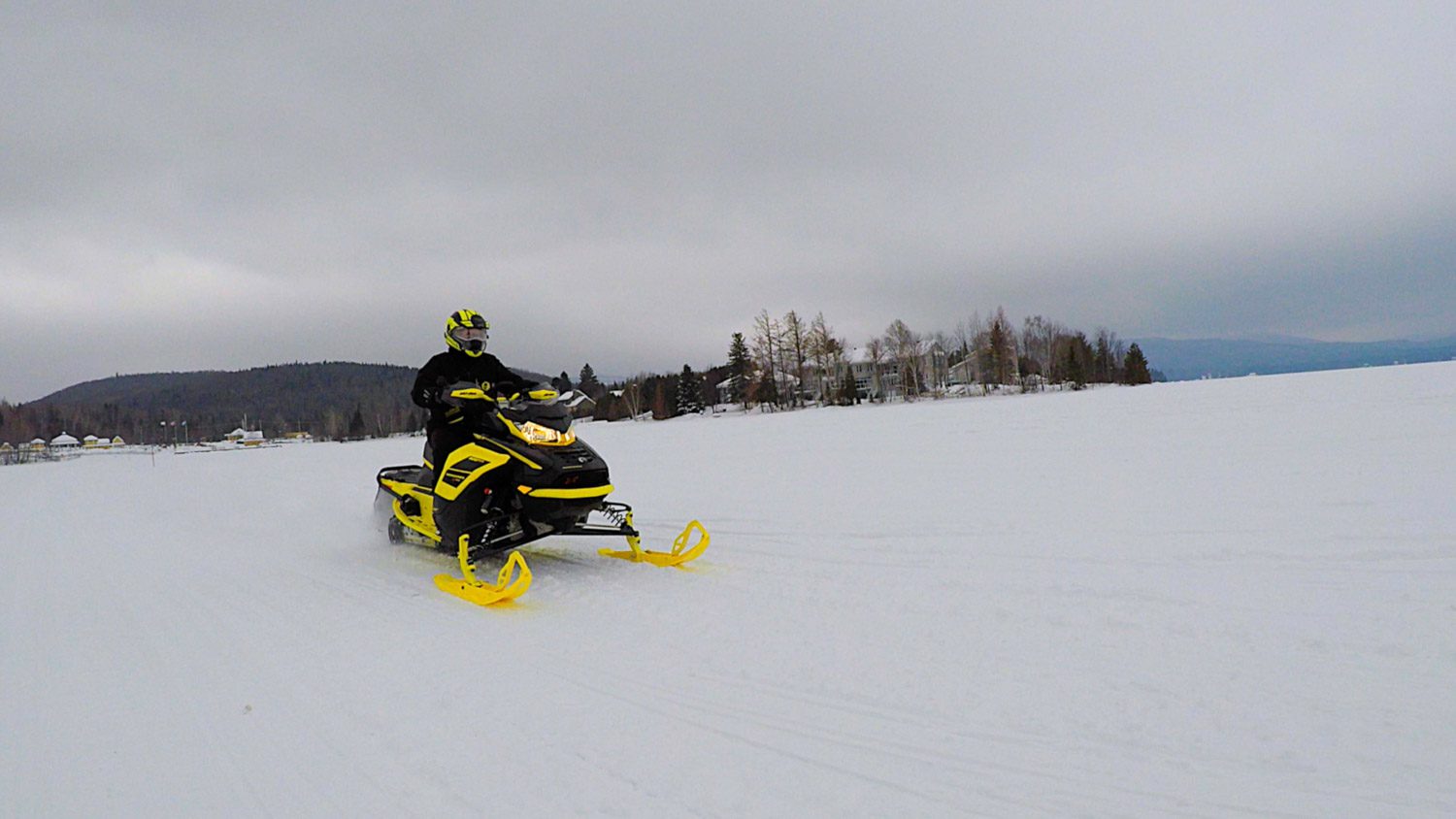
Passion Motoneige:
What are the minimum ice thicknesses for safe driving?
Raynald Hawkins:
It is the responsibility of the snowmobile clubs to carry out periodic checks to ensure that the ice is thick enough for traffic. In some other places, it is the responsibility of the municipalities when there is a skating rink surface. The minimum thickness for a pedestrian is 10 cm (4 inches) and for a snowmobile is 12 to 15 cm (5-6 inches). As long as a trail is marked, it is safe to use. In other situations, it is better to contact the local authorities. This way, we can continue to have fun on the various bodies of water in Quebec.
In conclusion, drowning and water-related incidents can be avoided if we take the necessary precautions. Recklessness is an attitude that we must eliminate from our behavior as snowmobilers. Let’s be aware of the dangers at all times, because that’s how we’ll considerably reduce the number of fatal accidents related to snowmobiling. Let’s behave responsibly when we travel! We hope that these few tips will improve your knowledge and that you will be able to react adequately if an incident unfortunately occurs.





